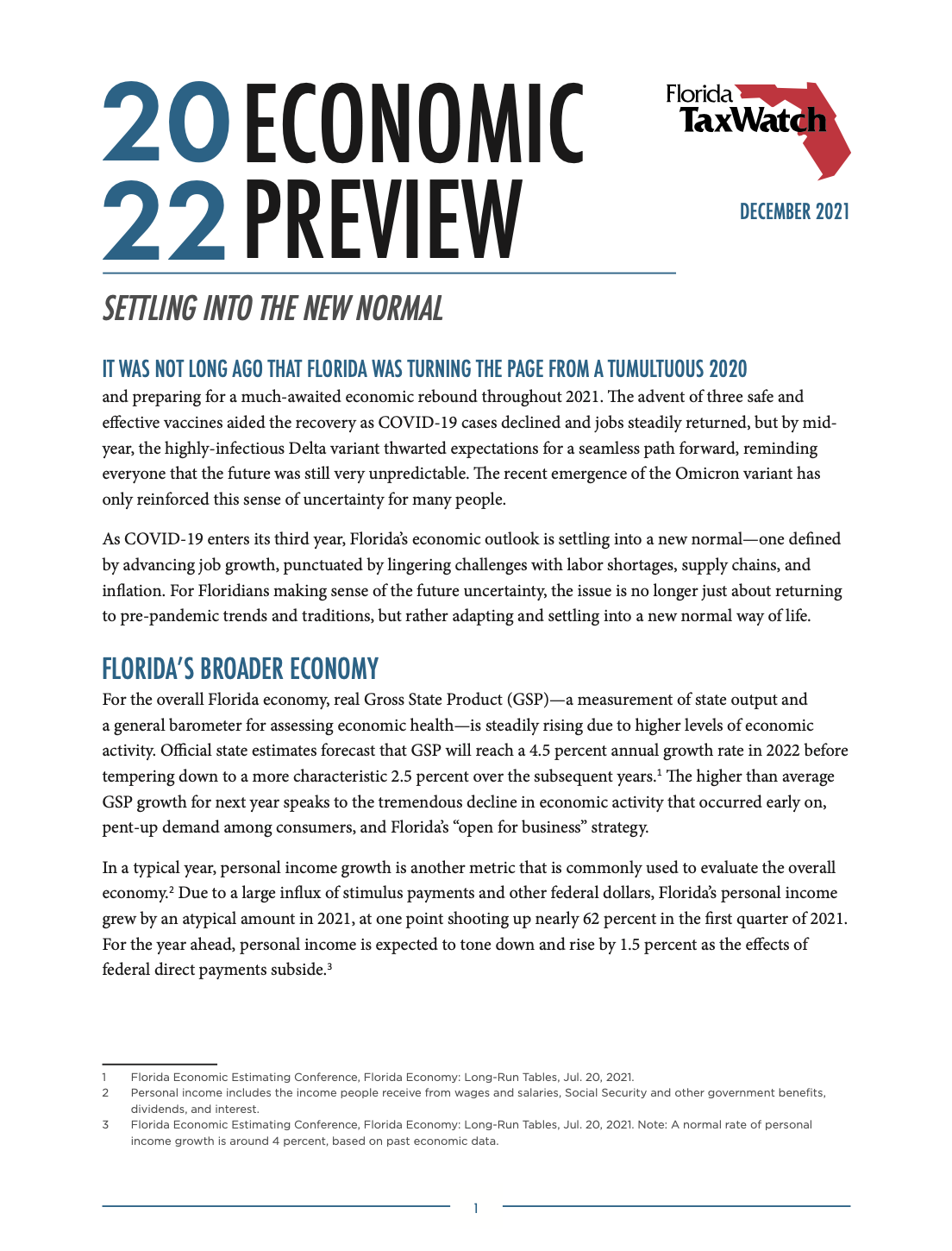2022 Economic Preview - Settling Into the New Normal

IT WAS NOT LONG AGO THAT FLORIDA WAS TURNING THE PAGE FROM A TUMULTUOUS 2020 and preparing for a much-awaited economic rebound throughout 2021. The advent of three safe and effective vaccines aided the recovery as COVID-19 cases declined and jobs steadily returned, but by mid-year, the highly-infectious Delta variant thwarted expectations for a seamless path forward, reminding everyone that the future was still very unpredictable. The recent emergence of the Omicron variant has only reinforced this sense of uncertainty for many people.
As COVID-19 enters its third year, Florida’s economic outlook is settling into a new normal—one defined by advancing job growth, punctuated by lingering challenges with labor shortages, supply chains, and inflation. For Floridians making sense of the future uncertainty, the issue is no longer just about returning to pre-pandemic trends and traditions, but rather adapting and settling into a new normal way of life.
For the overall Florida economy, real Gross State Product (GSP)—a measurement of state output and a general barometer for assessing economic health—is steadily rising due to higher levels of economic activity. Official state estimates forecast that GSP will reach a 4.5 percent annual growth rate in 2022 before tempering down to a more characteristic 2.5 percent over the subsequent years. The higher than average GSP growth for next year speaks to the tremendous decline in economic activity that occurred early on, pent-up demand among consumers, and Florida’s “open for business” strategy.
Reflecting general labor market conditions, Florida’s unemployment rate is anticipated to fall to 3.5 percent in 2022, somewhat approaching the pre-pandemic record of 3.1 percent set in 2019. Since some individuals may inevitably leave the labor force and therefore are not reflected in official unemployment rates, it is also worth looking at figures describing labor force participation. Based on estimates, Florida’s labor force is expected to climb by 2.9 percent in 2022 as more individuals gradually return to the labor force.
Anecdotally, many Floridians are witnessing the general improvements in the broader economy as leisure travel picks back up, spurring attendance at concerts, sporting events, and other gatherings across the state. Rebounding tourism has also brought many people back to the Sunshine State’s natural amenities and theme parks. Many regional real estate markets are attracting new residents to the state due to increased remote work. In response, many local businesses are capitalizing on the twin benefit of returning tourists and new residents.
For Florida’s economic outlook in 2022, projections are that employment will rise by 4.3 percent or about 379,500 additional jobs, and the state unemployment rate will decline to 3.5 percent. Job growth will lead in areas like Leisure & Hospitality but lag behind in Retail Trade. Personal income growth is also projected to rise by 1.5 percent next year; however, how this translates into increased consumer spending will be affected by how much inflation undermines consumer confidence. Next year, inflation is expected to rise by around 2.2 percent if supply chain and labor issues turn out to be truly transitory.